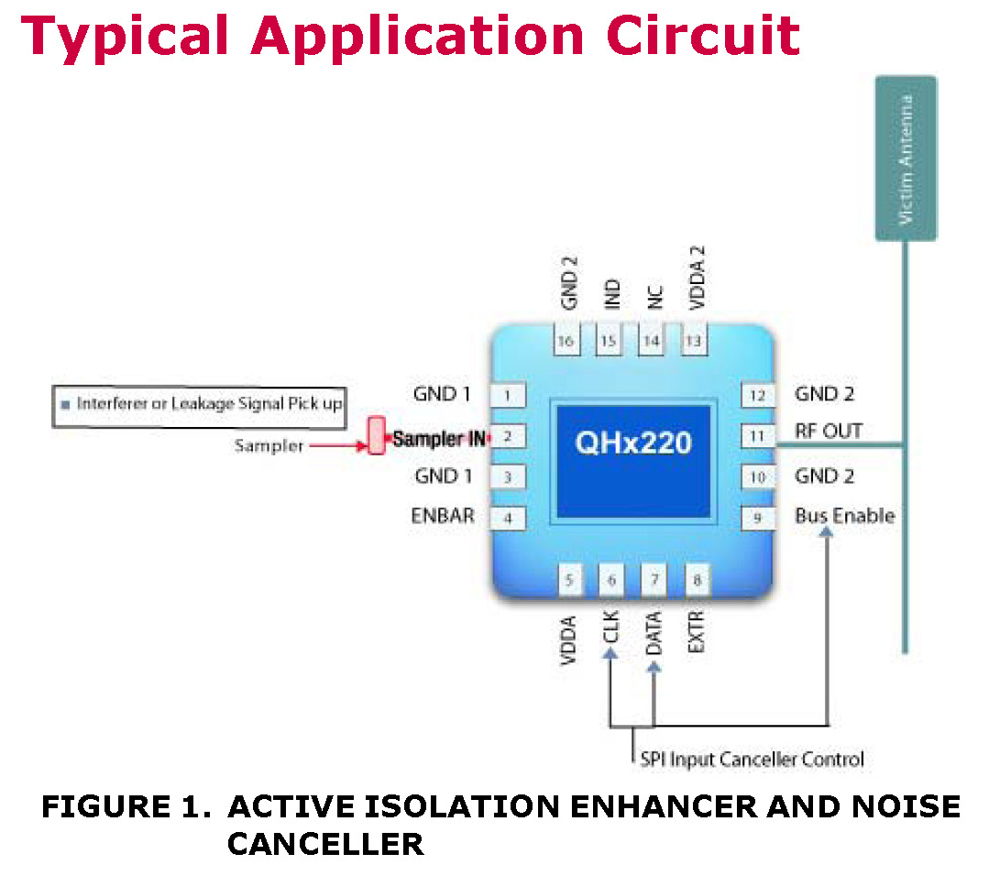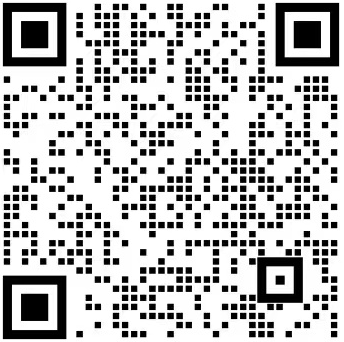Electromagnetic Interference (EMI) is emerging as a major concern in next generation wireless communication systems. As wireless terminals now support multiple services and features that utilize high data rates simultaneously, removing interference within wireless terminals like handsets has become a challenge.
Reducing the Electromagnetic Interference recovers the receiver sensitivity, enabling simultaneous operation of multiple radios, and improves the overall quality of service of communication devices. Intersils QHx220 is situated in a handset to sample the source of the noise and emulate the RF coupling channel between the noise source and victim receiver antenna. In doing so, an anti-noise signal can be applied directly to the victim receive path to cancel the EMI and achieve the signal integrity benefits. This approach makes it possible to cancel both in-band (within the victim Rx band) or out-of-band aggressors. This is a revolutionary approach since it is only possible to cancel out of band noise using conventional Rx filters.
In addition QHx220 may be used to increase the inherent isolation between antennas or inside duplexers and switches, thus allowing to increase the transmit power in repeaters or yielding higher sensitivity in the receivers. Both measures finally resulting in a better coverage, larger cell size, smaller antennas or lower power of infrastructure components such as basestations, pico-and Femtocells as well as repeaters.
The QHx220 integrates the sampler path LNA gain stages as well as the DACs required to control the I and Q control voltages (used to set the magnitude and phase of the cancellation signal). Both the gain, and control voltages are programmable using a SPI bus interface.
Key Features
- Protocol agnostic. Designed for: GSM, CDMA, DVB-H, ISDB-T, DMB
- Frequency Range 300MHz to 3GHz
- Integrated, programmable LNA gain stages in the sampler path
- SPI bus controlled integrated DACs
- >20dB Noise Cancellation is possible
- 50dB typical Dynamic Range
- Low Power Consumption (<20mW typical, ~2µW standby)
- Ultra Small ~ 1mm2 devices are available as tested bumped die or 3x3mm2 QFN package Benefits
- Actively cancels unwanted local RF noise
- Improves BER, receiver sensitivity, C/N by canceling noise generated from local aggressors
- Improves isolation between adjacent antennas
- Can be used to cancel in-band or out-of-band interferers (i.e. spurs, harmonics, phase noise, or other noise sources like IM products generated in a PA)
- Enables simultaneous operation of multiple co-located radios
- Improves overall quality of service
Applications
- Most any wireless device with a local aggressor:
- Cell phones
- Mobile TV devices
- Laptop Computers
- GPS terminals
- Pico- and Femtocells
- Improved Tx to Rx Isolation of devices (i.e. duplexer, switches) or between neighboring antennae
- Basestations
- Linearization of PAs

Datasheets| Title | Type | Updated | Size | Other Languages |
|---|
| QHx220 Datasheet | PDF | 22 Oct 2015 | 1.33 MB | |
Order Information| Part Number | Package Type | Weight(g) | Pins | MSL Rating | Peak Temp (°C) | RoHS Status |
|---|
|
| QHX220IQSR | 16 Ld QFN T+R | 0.027 | 16 | 1 | 260 | RoHS |
|
|
| QHX220IQT7 | 16 Ld QFN T+R | 0.027 | 16 | 1 | 260 | RoHS |
|
|
|
|
| EBH220BPCS-EVALZ | | | | N/A | | RoHS |
|
|
| EBH220BGSM-EVALZ | | | | N/A | | RoHS |
|
|
| EBH220BWIMAX-EVALZ | | | | N/A | | RoHS |
|
|

